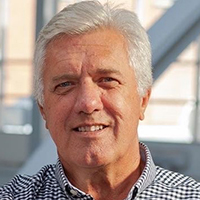
Gary Collins
President, Epilepsy Canada

Dr. Elizabeth Donner
Comprehensive Epilepsy Program Director, The Hospital for Sick Children
Board Member, Epilepsy Canada
Sudden unexpected death in epilepsy (SUDEP) is a rare but tragic occurrence. Epilepsy Canada is supporting critical research to reduce risk.
Epilepsy is a condition of abnormal electrical activity in the brain characterized by recurrent seizures. Approximately 360,000 Canadians live with epilepsy and it affects one in 100 people worldwide. Epilepsy can start at any time in life, affecting all facets of an individual’s physical, mental, and emotional well-being. In rare cases, it can be fatal.
Sudden unexpected death in epilepsy (SUDEP) refers to the sudden death of a person with epilepsy where no other cause of death can be determined. “The most common scenario is a person living with epilepsy who is most often found to have died overnight,” says Dr. Elizabeth Donner, Director of the Comprehensive Epilepsy Program at the Hospital for Sick Children and Board Member and Chair of Epilepsy Canada’s Scientific Review Committee.
The risk for SUDEP is highest in people with uncontrolled and recurring full-body convulsions, particularly at night or during sleep. “The tired, drowsy, or sleeping brain is more prone to produce a seizure and for reasons that scientists are working to understand, some seizures may affect the areas of the brain that control breathing and heart rate,” says Dr. Donner.
“The tired, drowsy, or sleeping brain is more prone to produce a seizure and for reasons that scientists are working to understand, some seizures may affect the areas of the brain that control breathing and heart rate.”
Knowing who’s at risk can help save lives
Originally thought to be less prevalent in children than in adults, Dr. Donner has discovered that SUDEP is equally as common in children. The good news is that there may be a way to help identify children at higher risk.
In a 2017 paper published in The Journal of Pediatric Neurology, Dr. Donner and her colleagues studied 77 generalized convulsive seizures in 40 children between the ages of one and 17. They found that children who showed brain suppression tendency during their seizure also showed a unique posture during their seizure. By identifying children at highest risk, Dr. Donner hopes that we can develop strategies to reduce risk.
Research like this is funded by Epilepsy Canada. “Research takes time, and it’s incredibly expensive,” says Gary Collins, President of Epilepsy Canada. “So in order to improve the lives of people living with epilepsy, we need time and money.”



